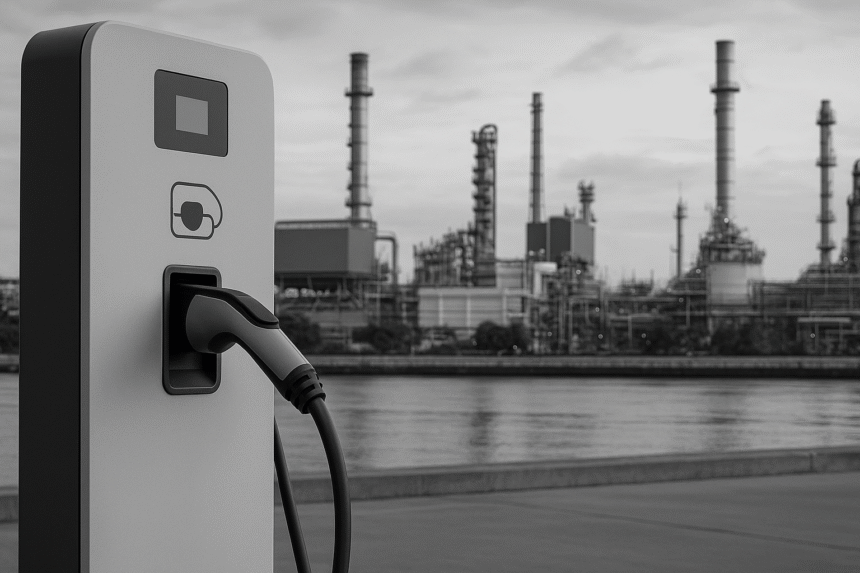Middle East Energy Transition and Its Impact on EVs: What Business Leaders Should Know
The Middle East energy transition is more than just a pivot away from oil—it’s a full-scale shift toward clean, smart, and sustainable energy systems. This transition is directly influencing the rise of electric vehicles (EVs), shaping investment patterns, infrastructure demands, and regulatory policies across the region.
For CEOs, infrastructure providers, and government contractors in the Middle East, understanding this evolving landscape is not just relevant—it’s critical.
Clean Mobility: At the Heart of the Energy Shift
The Middle East energy transition is increasingly defined by its mobility strategy. Countries in the Gulf are aligning their long-term visions—such as Saudi Arabia’s Vision 2030 and the UAE’s Net Zero 2050 Strategy—with a rapid shift toward electric and hybrid transportation.
Key mobility trends include:
-
National EV targets: UAE aims to electrify 20% of its government fleet by 2030.
-
Public transit upgrades: Dubai’s RTA has started converting taxis and buses to electric.
-
Urban planning: Cities like NEOM in Saudi Arabia are designed as car-free or EV-only zones.
In this context, EV infrastructure is no longer optional—it’s foundational to regional mobility policies.
Green Hydrogen and EV Synergy
One of the most exciting aspects of the Middle East energy transition is the rise of green hydrogen, which complements electric vehicle adoption in several ways.
Why does it matter?
-
Heavy-duty transport: While battery EVs work well for cars, green hydrogen is becoming the go-to solution for long-range trucks and buses.
-
Energy storage: Hydrogen offers a solution for grid balancing, particularly important as solar energy becomes more dominant.
-
Export opportunity: Countries like Saudi Arabia and the UAE are aiming to become global green hydrogen exporters, fueling both domestic and foreign clean mobility.
This dual-track approach—battery EVs for urban transport and hydrogen for industrial logistics—positions the region as a leader in next-generation transportation models.
Regulatory Frameworks Are Taking Shape
As the Middle East energy transition progresses, so too do regulatory structures designed to support clean vehicles and infrastructure development.
Common features across the region include:
-
Licensing for EV infrastructure providers (e.g., DEWA in Dubai, ADDC in Abu Dhabi)
-
Public procurement preferences for electric fleets
-
Free-zone and municipality-level mandates for EV-ready buildings
-
Import duty incentives for EV manufacturers and components
For businesses, especially those in construction, manufacturing, and logistics, staying updated on these evolving frameworks is essential for tender eligibility and long-term compliance.
Country-Level Comparisons in the Energy Transition
Each Middle Eastern country is moving at a different pace—but all are advancing.
United Arab Emirates (UAE)
-
Key highlight: Dubai’s Green Charger initiative and more than 800 public chargers as of 2024.
-
EV penetration: Expected to reach over 10% by 2030.
-
Notable projects: Masdar City’s autonomous EV infrastructure.
Saudi Arabia
-
Key highlight: Massive investment in NEOM’s clean energy and EV integration.
-
EV production: Lucid Motors’ facility in Jeddah targeting 150,000 EVs annually.
-
Hydrogen focus: Green hydrogen hubs under development with international partners.
Qatar
-
Key highlight: Electrification of public buses ahead of the 2022 World Cup.
-
Future focus: Smart city integration of EVs in Lusail and Doha.
Oman and Bahrain
-
Slower start, but picking up momentum through private-sector initiatives and fleet electrification.
For suppliers, contractors, and developers, the opportunity lies in tailoring proposals to match each country’s regulatory speed and infrastructure readiness.
Infrastructure Challenges and Business Implications
Despite momentum, the Middle East energy transition still faces real infrastructure hurdles that create both challenges and opportunities.
Ongoing challenges:
-
Grid readiness: Fast-charging infrastructure requires significant power upgrades.
-
Standardization issues: Variations in charging protocols across GCC states create cross-border compatibility problems.
-
Maintenance gaps: Limited local capacity to service and support EVs and chargers.
For forward-thinking companies, these challenges represent areas for innovation, joint ventures, and local service development.
Conclusion: Aligning Strategy with Transition Goals
The Middle East energy transition is no longer theoretical. It is actively reshaping how cities are built, how people move, and how businesses operate.
For CEOs and infrastructure leaders, this means:
-
Aligning business models with national sustainability goals.
-
Investing in technologies that complement both EV and hydrogen mobility.
-
Partnering with regulators and municipalities to lead, not follow, the clean transition.
Whether your company builds roads, supplies power, manages fleets, or delivers smart infrastructure—the time to act is now.



Leave a Reply